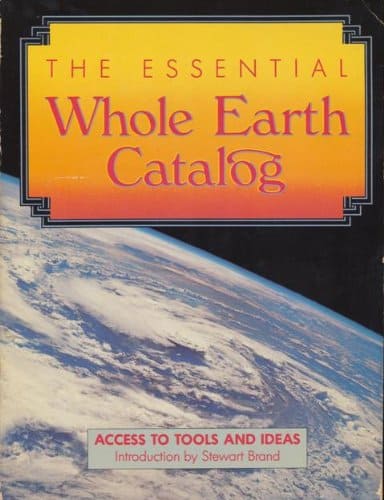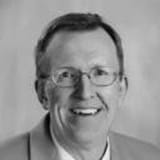By William H. Benson
The Parallel Lives
Of The NOBLE AMERICAN RELIGIOUS THINKERS AND BELIEVERS:
Roger Williams VS. Cotton Mathers
NEW ARTICLES

Stewart Brand: “The Whole Earth Catalog”
Stewart Brand: “The Whole Earth Catalog”
Steve Jobs gave the commencement address at Stanford University on June 14, 2005. In it, he told three stories. The first was how he dropped out of Reed College, in Portland, Oregon. The second was how a manager fired him from the company that he and Steve Wozniak had started in a garage.
The third story was about his pending death, due to a pancreatic cancer diagnosis a year before.
Then, after he finished the three stories, he said, “When I was young, there was an amazing publication called “The Whole Earth Catalog,” which was one of the bibles of my generation. It was created by a fellow named Stewart Brand, not far from here in Menlo Park, California.
“This was in the late 1960’s, before personal computers and desktop publishing, so it was made with typewriters, scissors, and Polaroid cameras. It was sort of like [a search engine] in paperback form, 35 years before [a search engine] came along. It was overflowing with neat tools and great notions.”
Now I wonder why Steve Jobs decided to attach those two paragraphs about a catalog from 1968, to his address to graduates at Stanford. Yet, I find Jobs’s quote most interesting.
I remember, when in high school in the late 1960’s, I glanced once or twice at “The Whole Earth Catalog,” but I never ordered anything from it. I do remember the distinctive picture of planet Earth on the catalog’s front cover, taken by an ATS-3 satellite, but I fail to remember any of the listings inside.
On the internet, in recent days, I found a copy of the first edition from 1968. Subtitled “Access to Tools,” it is 62 pages long, and is a cut and paste catalog. Each listing gives a picture of an item, its price, an address where a buyer can mail a check, plus a review of the listing.
For example, on page 5 is the book, Cosmic View: The Universe in 40 Jumps. Priced at $3.75, the review says, “It is the bestseller of the Whole Earth Catalog.”
There are books on how to build a tipi, or a Japanese-styled house, or design Aladdin Kerosene lamps, set up bee-keeping, find mushrooms, perform yoga, play a game called Dr. Nim, or build computers. On page 55, a listing offers “700 Science Experiments for Everyone,” at a price of $4.00.
A buyer could buy catalogs that offer Brookstone Tools or Jensen Tools, plus a Miners Catalog, and a Blasters’ Handbook, and Glenn’s Auto Repair Manual, published by Chilton. There are listings on self-hypnotism, psycho-cybernetics, a Yaqui Way of Knowledge, etc. Something for everyone.
A free L.L. Bean Catalog is offered on pages 47-48. The reviewer says, “The Bean catalog is the model for the WHOLE EARTH CATALOG.” Tandy Leather & Crafts Catalog is found on page 31.
The final listing is on page 61, and is “The I Ching, or the Book of Changes.”
Looking at it today, the “Whole Earth Catalog” resembles an on-paper form of the internet. At the time though it was “a counterculture magazine that stressed self-sufficiency, a do-it-yourself mindset, and alternative forms of education.” Hippies and flower children loved it.
Stewart Brand lives on. He is 83 years old, an old hippy who resides on California’s coast in a houseboat, and today he is found working on a “Clock of the Long Now,” a timepiece that will reside inside a cave within a mountain in southwest Texas. Its intent: track time for 10,000 years.
Brand shies away from the title of futurist. Instead, he moves and explores in terms of “long-term thinking.” He is “unwavering in his optimism about the future,” certain that “humanity’s future lies in our ability to develop technology.” “Progress,” he says, “consists of adding more options.”
Twenty years ago, Brand changed his mind about nuclear energy, after he discovered that some experts believed new nuclear technologies would be found to use what is now considered nuclear waste. That changed the way he thought about the future in general.”
Some time ago, Brand tweeted: “Interesting: how much bad news is anecdotal, and good news is statistical, and how invisible the statistical is.” I struggle with what he means, but I guess Brand intends to say that bad news is an anecdote, a recent news item that catches our attention and then fades away.
The good news though, he says, is buried unseen in the statistics, in the accumulation of multiple numbers of anecdotes that point upwards, indicating a positive human-benefiting trend. Hence, his healthy optimism about the future.
Steve Jobs dropped out of college, but he learned calligraphy there. He lost his job, but he met the love of his life, his wife, and he formed his own company that his previous company then bought. He was back. It was most misfortunate though that cancer ended his life on October 5, 2011.
At the end of his speech to Stanford’s graduates, Jobs said he remembers that on the back cover of the final issue of the “Whole Earth Catalog” there appeared the words, “Stay Hungry. Stay Foolish.”
Jobs says, “I have always wished that for myself, and now, as you graduate to begin anew, I wish that for you.”
COMEDY AND TRAGEDY
COMEDY AND TRAGEDYCOMEDY AND TRAGEDY by William H. Benson March 11, 2004 Comedy is about getting the right guy with the right girl, and the play ends with a wedding. It is about light-hearted and romantic emotions, smiles and kisses. It is desire and...
KERRY AND BUSH
KERRY AND BUSHKERRY AND BUSH by William H. Benson February 26, 2004 Scandals, accusations, finger-pointing, denials, justifications, and dirt-digging—all seem to overshadow the run up to elections wherever and whenever across America, and the 2004 Presidential...
MARY TODD LINCOLN
MARY TODD LINCOLNMARY TODD LINCOLN by William H. Benson February 12, 2004 Their friends and family often wondered what they saw in each other. He was tall, 6’ 4”, gangly, ugly, poor, even-tempered, messy, poorly dressed, and given over to melancholy moods. She...
DON QUIXOTE
DON QUIXOTEDON QUIXOTE by William H. Benson January 29, 2004 The most well-remembered scene from Cervantes’s Don Quixote is the Man of La Mancha, a knight suited in steel armor, astride his horse in a full gallop, his lance tilted, in a full-throttled attack upon...
WINSTON CHURCHILL
WINSTON CHURCHILLWINSTON CHURCHILL by William H. Benson January 15, 2004 For Christmas this year I received two books, and coincidentally both were recent biographies on Winston Churchill. Considered the greatest Englishmen who has ever lived and also the...
NEW YEAR’S DAY RESOLUTIONS
NEW YEAR’S DAY RESOLUTIONSNEW YEAR’S DAY RESOLUTIONS by William H. Benson January 1, 2004 On January 1, 1831 William Lloyd Garrison, the abolitionist, began publishing the Liberator in Boston. It carried its motto on the first page: “I am in earnest. I will not...
Older Posts
HARRY TRUMAN
HARRY TRUMANHARRY TRUMAN by William H. Benson December 18, 2003 On the morning of December 5, 1950 President Harry Truman was reading in the Washington Post a most unflattering commentary on Margaret’s singing performance the evening before in Washington. With...
CHILDREN’S LITERATURE
CHILDREN’S LITERATURECHILDREN’S LITERATURE by William H. Benson December 4, 2003 Horror has never held my attention. I have tried to complete a Stephen King novel numerous times, and invariably after a couple of chapters of gruesome and fanciful scenes, I give...
WILLPOWER AND GRATITUDE
WILLPOWER AND GRATITUDEWILLPOWER AND GRATITUDE by William H. Benson November 20, 2003 M. Scott Peck said in his book The Road Less Traveled that life’s two greatest possessions are a forceful will and a grateful attitude. A person who has a forceful will is considered...
THE WAR IN THE PACIFIC
THE WAR IN THE PACIFICTHE WAR IN THE PACIFIC By William H. Benson November 6, 2003 Although I am not a big fan of Stephen Ambrose, I did read his last book, To America—Personal Reflections of an Historian, which he published just prior to his passing a...
SMALLPOX
SMALLPOXSMALLPOX By William H. Benson October 23, 2003 The minister at the North Church in Boston, Cotton Mather, received his first printed copy of Magnalia Christi Americana on October 29, 1702, and on the same day he discovered that his 8-year-od daughter had...
TUESDAY–SEPTEMBER 11, 2001
TUESDAY--SEPTEMBER 11, 2001TUESDAY--SEPTEMBER 11, 2001 by William H. Benson September 11, 2003 Last week Newsweek reported that Osama bin Laden, hiding in Afghanistan's Kunar province, spoke last January at the funeral of one of his daughters-in-law, who had died...

One of University of Northern Colorado’s 2020 Honored Alumni
William H. Benson
Local has provided scholarships for history students for 15 years
A Sterling resident is among five alumni selected to be recognized this year by the University of Northern Colorado. Bill Benson is one of college’s 2020 Honored Alumni.
Each year UNC honors alumni in recognition for their outstanding contributions to the college, their profession and their community. This year’s honorees were to be recognized at an awards ceremony on March 27, but due to the COVID-19 outbreak that event has been cancelled. Instead UNC will recognize the honorees in the fall during homecoming Oct. 10 and 11……
Newspaper Columns
The Duodecimal System
For centuries, the ancient Romans calculated sums with their clunky numerals: I, V, X, L, C, D, and M; or one, five, ten, 50, 100, 500, and 1,000. They knew nothing better.
The Thirteenth Amendment
On Jan. 1, 1863, President Abraham Lincoln signed the Emancipation Proclamation, and by it, he declared that “all persons held as slaves” within the rebellious states “are and henceforward shall be free.” Lincoln’s Proclamation freed some 3.1 million slaves within the Confederacy.
The Fourteenth Amendment
After Congress and enough states ratified the thirteenth amendment that terminated slavery, Congress passed the Civil Rights Act of 1866. This law declared that “all people born in the United States are entitled to be citizens, without regard to race, color, or previous condition of slavery or involuntary servitude.” The Act equated birth to citizenship.
The New-York Packet and the Constitution
Jill Lepore, the Harvard historian, published her newest book a month ago, These Truths: A History of the United States. In a short introduction, she describes in detail the Oct. 30, 1787 edition of a semi-weekly newspaper, The New-York Packet.
Mr. Benson’s writings on the U.S. Constitution are a great addition to the South Platte Sentinel. Its inspiring to see the history of the highest laws of this country passed on to others.
– Richard Hogan
Mr. Benson, I cannot thank you enough for this scholarship. As a first-generation college student, the prospect of finding a way to afford college is a very daunting one. Thanks to your generous donation, my dream of attending UNC and continuing my success here is far more achievable
– Cedric Sage Nixon
Donec bibendum tortor non vestibulum dapibus. Cras id tempor risus. Curabitur eu dui pellentesque, pharetra purus viverra.
– Extra Times
FUTURE BOOKS
- Thomas Paine vs. George Whitefield
- Ralph Waldo Emerson vs. Joseph Smith
- William James vs. Mary Baker Eddy
- Mark Twain vs. Billy Graham
- Henry Louis Mencken vs. Jim Bakker






